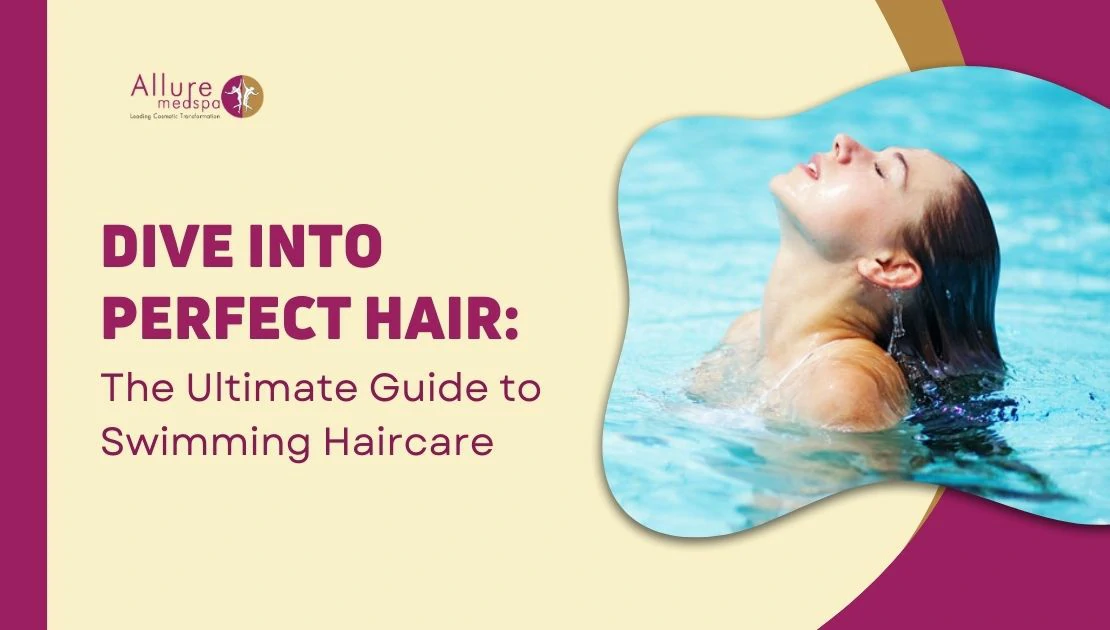Swimming Haircare: Protect Your Hair Before, During & After the Pool
Enjoy the water without sacrificing hair health—learn how chlorine affects hair and the exact routine to follow pre-swim, in the pool, and post-swim.
Contents
- Understanding the Effects of Chlorine on Hair
- Common Hair Issues Faced by Swimmers
- Pre-Swim Hair Care Tips
- Choosing the Right Swim Cap
- Hair-Care Measures During Swimming
- Post-Swim Hair-Care Routine
- Essential Ingredients for Swim-Friendly Hair Care
- Final Thoughts
- FAQs
Introduction
Swimming is a fantastic way to stay fit and unwind—but regular dips in chlorinated pools can cause dryness, split ends, discoloration, and scalp irritation. This guide shows you how to protect your hair at every step so you can keep swimming and keep your strands healthy.
Understanding the Effects of Chlorine on Hair
- Strips natural oils: Removes the protective lipid layer, leaving hair dry and weak.
- Damages the cuticle: Roughens the outer layer, increasing frizz and dullness.
- Raises porosity: Hair absorbs more water/chemicals and loses moisture faster.
- Breaks down proteins: Can degrade keratin, compromising strength and elasticity.
Common Hair Issues Faced by Swimmers
- Dry, brittle hair from moisture loss.
- Split ends & breakage due to weakened strands.
- Greenish tint (from copper reacting in chlorinated water).
- Scalp irritation such as itchiness or redness.
Pre-Swim Hair Care Tips
- Oil your hair: Light coat of coconut or argan oil to form a barrier.
- Pre-swim rinse: Saturate with fresh water so hair absorbs less pool water.
- Leave-in conditioner: Apply a hydrating, silicone-free leave-in.
- Wear a swim cap: Reduce direct contact with pool water.
- SPF for hair: If outdoors, use UV-protectant sprays to guard color and cuticle.
Choosing the Right Swim Cap
| Material | Best For | Notes |
|---|---|---|
| Silicone | Regular swimmers | Durable, snug fit, gentle on hair. |
| Latex | Warm climates | Lightweight, budget-friendly, a bit tighter on hair. |
| Rubber | Cooler water | Thicker material; good insulation. |
| Lycra/Spandex | Casual/recreational swims | Soft, comfy; least water-blocking. |
| Neoprene | Open-water swimming | Best insulation; adds warmth and protection. |
Hair-Care Measures During Swimming
- Secure long hair: Braid or bun to reduce tangling and exposure.
- Double-cap method: Lycra under silicone for extra protection.
- Limit overexposure: Take breaks to reduce cumulative chlorine contact.
Post-Swim Hair-Care Routine
- Rinse thoroughly: Flush out chlorine with fresh water immediately.
- Clarifying shampoo: Use swimmer-safe or chelating shampoo as needed (2–3×/week).
- Hydrating conditioner: Replenish moisture with a rich conditioner or mask.
- Air dry: Avoid hot tools; if needed, use low heat and a heat protectant.
- Detangle gently: Wide-tooth comb from ends upward.
Essential Ingredients for Swim-Friendly Hair Care
- Coconut oil: Occlusive, reduces protein loss, adds slip.
- Shea butter: Deep moisturization and softness.
- Pro-vitamin B5 (Panthenol): Improves elasticity and shine.
- Aloe vera: Calms irritated scalp and hydrates.
- Apple cider vinegar: Helps remove buildup and rebalance pH.
Final Thoughts
With the right prep, protection, and post-swim routine, you can swim regularly and keep your hair strong, smooth, and vibrant. Treat your hair like a pro swimmer—then dive right in.
FAQs on Swimming Haircare
Q1. Can I swim without a swim cap?
Ans. Yes, but a cap significantly reduces chlorine exposure and keeps hair more manageable.
Q2. How often should I wash my hair after swimming?
Ans. Rinse immediately after every swim. Use a clarifying/anti-chlorine shampoo 2–3 times per week depending on how often you swim.
Q3. Can I use regular shampoo after swimming?
Ans. You can, but swimmer-specific clarifying or chelating shampoos remove pool chemicals more effectively.
Q4. Is coconut oil good for swimmers?
Ans. Yes—used pre-swim, it helps reduce water uptake and protein loss; post-swim, it helps lock in moisture.
Q5. How can I prevent my hair from turning green?
Ans. Pre-rinse with fresh water, wear a cap, and wash with a clarifying or chelating shampoo after each swim to remove metals like copper.







